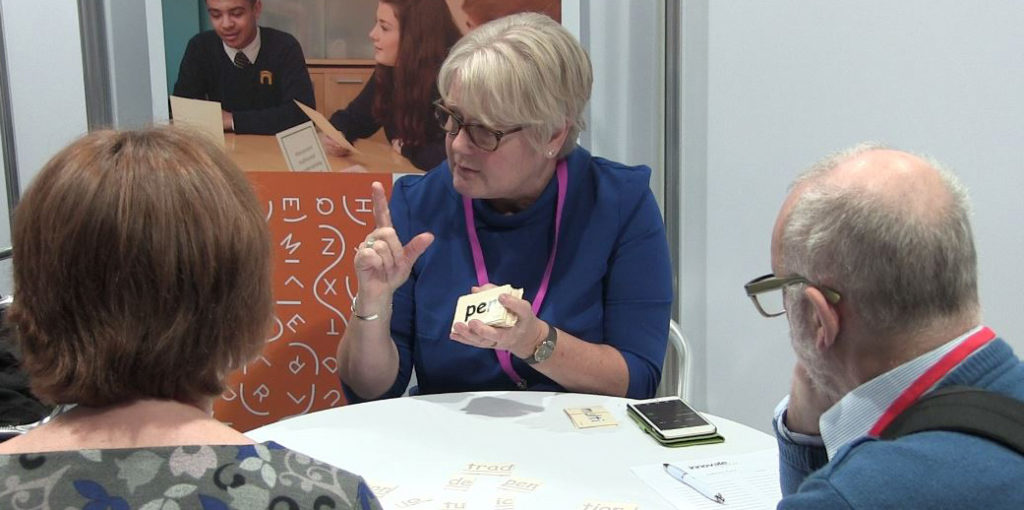
Reading time: 2 minutes. Relevant event: SSAT School Improvement 2018
Katy Parkinson, Founder Director of Sound Training writes
‘Once you learn to read, you will be forever free.’ Frederick Douglass, African-American statesman who had been born into slavery.
The term ‘literacy’ means different things to different people. For some, it simply means the ability to read a piece of text. For others, including myself, it is far more than that. It means having the ability and opportunity to explore, learn and think critically about what we read, see and hear. It is about having the ability to understand language and communicate effectively with others.
When students arrive in secondary schools they are exposed to a new curriculum, which brings with it increased complexity of reading tasks. Too many find their reading skills and vocabulary knowledge are not secure enough. They begin to struggle in all aspects of school life; learning becomes too difficult. Too many begin to switch off. We need to address this.
Time is running out for them. We need to put in place some high-impact strategies focusing on how to decode words and develop vocabulary knowledge. These two key skills are the basic bricks and mortar required to become effective learners.
We need to put in place some high-impact strategies for secondary students focusing on how to decode words and develop vocabulary knowledge
It also needs to be pointed out that teaching these skills is not solely the responsibility of the English department. They teach a subject in the same way as science, maths, history and geography teachers do. But alongside the subject content, every single teacher needs to be teaching the reading, writing and vocabulary skills required within their subject area.
There is an abundance of research telling us that phonemic awareness, ie the identification of the smallest unit of sound, is the prerequisite for reading proficiency.
Research on phonological awareness training for older students proves much more difficult to find. However, the work by Shaywitz (2003) strongly supports the idea that explicit phonological awareness training is essential for secondary-aged students. This training needs to match the level and complexity of words that students are encountering in the classroom. By doing this, we can truly stretch and challenge them to develop their decoding skills quickly and effectively.
However, decoding words will only take the students so far. It is the first piece of the jigsaw – vocabulary is the next piece.
If we are serious about improving the outcomes of our students we must set high expectations for all and deliver intensive, direct instruction, which is spaced over a short period of time, focusing on the following four key areas:
- Phonological awareness – awareness and manipulation of the sound structure held within speech.
- Age appropriate phonics teaching – linking sound patterns to letter patterns.
- Vocabulary development – looking at the definitions of root words and how prefixes and suffixes alter meaning.
- Metacognition – the awareness and understanding of how we think.
Bring back Latin
Research carried out by Beck & Mckeown (2002) found that all students are able to learn sophisticated challenging vocabulary. So, bearing that in mind, we need to look at ways to expose students to complex language without prejudging their ability to understand that level of language. They need to be taught to look for clues held within words. They need to be shown how to independently analyse words and discover their meanings because they cannot always rely on prior knowledge or experience.
So, let’s bring back Latin, the so-called dead language; bring it back to life in a modern, fast, and fun manner and let everyone benefit.
‘I never knew words gave clues to their meaning.’ (Year 9 student, Archway School)
‘[People should] Never be afraid of their own language.’ (Year 11 student, Brynmawr School).
Without phonological awareness and knowledge of phonics, you will have difficulty in decoding the text. Without vocabulary knowledge, you will have difficulty understanding the text.
We need to teach both these skills if we are serious about improving literacy skills of our students. And, of course, the two crucial ingredients needed are well-trained staff and appropriate resources.
As we all know – where there’s a will, there’s a way!
References
Beck, I. L., & McKeown, M. G., (2002). Bringing words to life. New York: Gilford
Shaywitz, S. (2003). Overcoming Dyslexia. New York: A.A. Knopf.
Katy Parkinson is speaking at SSAT School Improvement 2018 to outline how to make a school improvement plan a reality and how to know when you have arrived. Find out more and book your place here
Read on the SSAT blog: Intensive focus boosts literacy
 Follow Katy Parkinson on Twitter
Follow Katy Parkinson on Twitter
